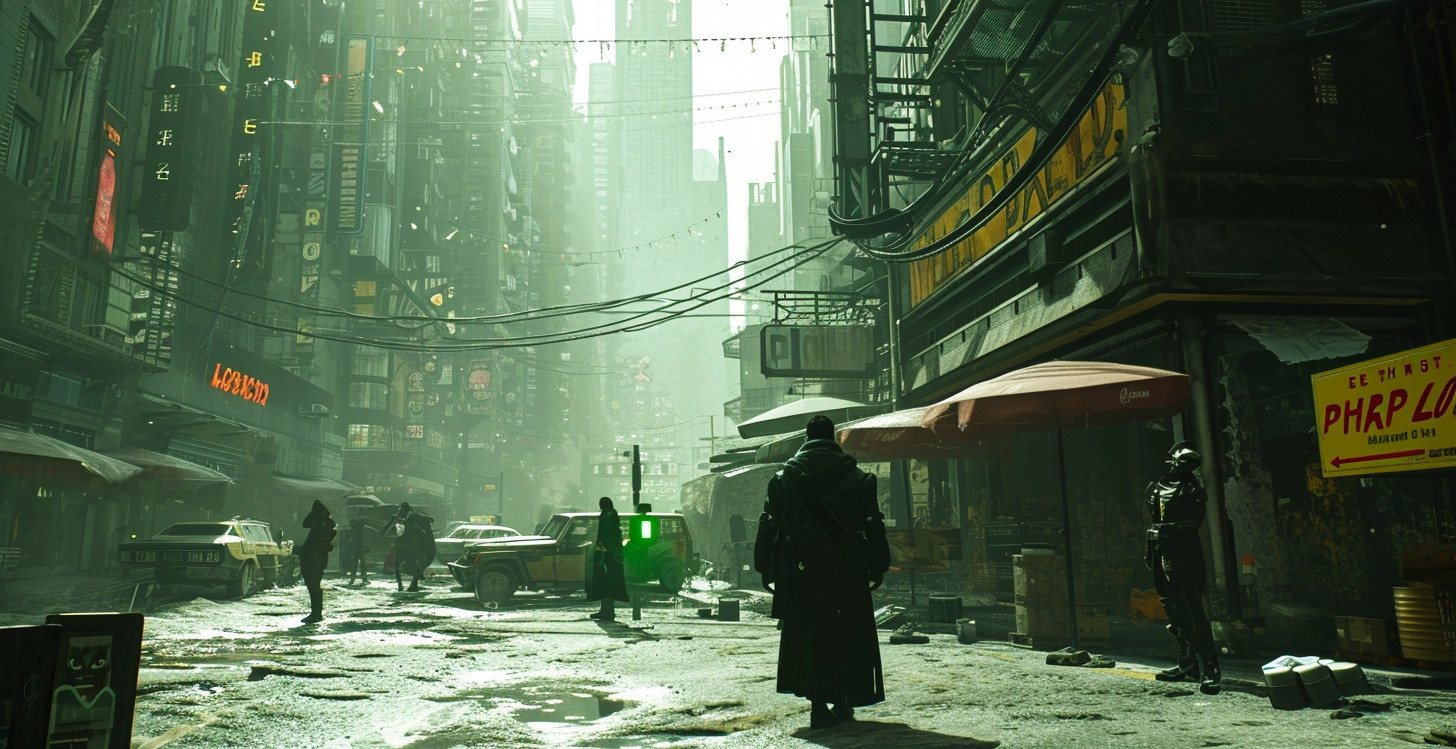“The Matrix Awakens,” an Unreal Engine 5 interactive tech demo, is more than just a showcase of advanced graphics and physics, it’s a glimpse into the future of gaming and artificial intelligence. Released in December 2021 for PlayStation 5 and Xbox Series X/S, this demo, inspired by the iconic “Matrix” film series, has been making waves not only for its stunning visuals but also for its groundbreaking experiment involving ‘smart NPCs’ (Non-Player Characters).
Visual and Technical Prowess:
At first glance, “The Matrix Awakens” is a visual marvel. The demo offers a hyper-realistic urban environment, complete with bustling streets, towering skyscrapers, and dynamic lighting that shifts from day to night. The highlight is the high-speed car chase sequence, which feels like it’s straight out of a “Matrix” movie. The realistic rendering of characters, blurs the line between game and reality.
AI Experiment:
NPCs Confront the Simulation:
Beyond its visual spectacle, “The Matrix Awakens” has become a hot topic for an intriguing social media experiment. In this experiment, players interact with the smart NPCs in the demo, informing them that they are part of a simulation. The reactions of these NPCs have been varied and fascinating, sparking discussions about AI consciousness and the potential of video game AI.
Some NPCs in the demo appear bewildered or dismissive when confronted with the reality of their existence. Others engage in philosophical dialogues, showcasing a level of complexity in their programming that goes beyond typical NPC interactions in games. These reactions are not just pre-scripted responses but are dynamically generated, showcasing the advanced AI capabilities of Unreal Engine 5.
Philosophical Implications and Future Possibilities:
Such a video experiment raises profound questions about the nature of consciousness and reality, themes that are central to the “Matrix” franchise. It also hints at the potential future of gaming, where NPCs could evolve to become more than mere background characters, possibly affecting game narratives and player experiences in more significant ways.
Our reality:
The demo, with its hyper-realistic environments and the deeply interactive experiment involving NPCs, not only demonstrates the technical prowess of Unreal Engine 5 but also reinforces the intriguing philosophical question: Are we living in a simulation? The seamless blend of reality and digital creation in the demo makes it increasingly difficult to distinguish between the two, mirroring the central theme of the “Matrix” universe. The experiment, where NPCs react to the revelation of their existence within a simulation, further blurs the lines between simulated and real consciousness. This raises a thought-provoking mirror to our own existence – if a digital creation within a game can be made to question its reality, it naturally leads us to ponder the nature of our own reality. Could our responses to the world around us be as pre-programmed and artificial as those of the NPCs in the demo? The demo doesn’t just showcase technological advancements; it subtly nudges players to contemplate the very nature of consciousness and reality, echoing the age-old philosophical query: are we ourselves just characters in an elaborate, cosmic simulation?
Conclusion:
“The Matrix Awakens” is more than a tech demo; it’s a groundbreaking step forward in the integration of advanced graphics and AI in gaming. The experiment with NPCs realizing their existence within a simulation is a testament to the evolving complexity of video game AI. As technology continues to advance, we can expect future games to deliver even more immersive and interactive experiences, blurring the lines between our reality and the digital worlds we escape into.
